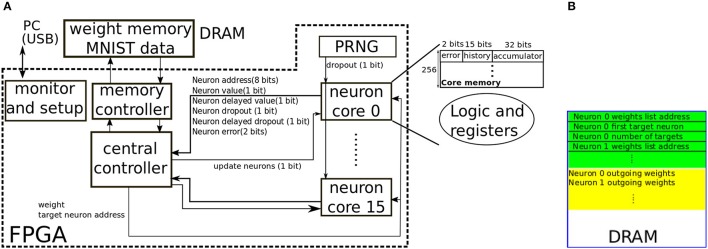Figure 5.
(A) Block diagram of the FPGA architecture implementing pipelined backpropagation. Sixteen neuron cores with 256 neurons each are sequentially updated to realize the pipelined backpropagation scheme illustrated in Figure 4. Each core uses 256 × 49 = 12,544 bits of internal memory to store the states of the 256 neurons. A Pseudo Random Number Generator (PRNG) supplies the dropout signal to the core. The probability that the dropout signal is asserted is controlled by a configurable register in the PRNG. (B) Layout of weights in the external memory.

